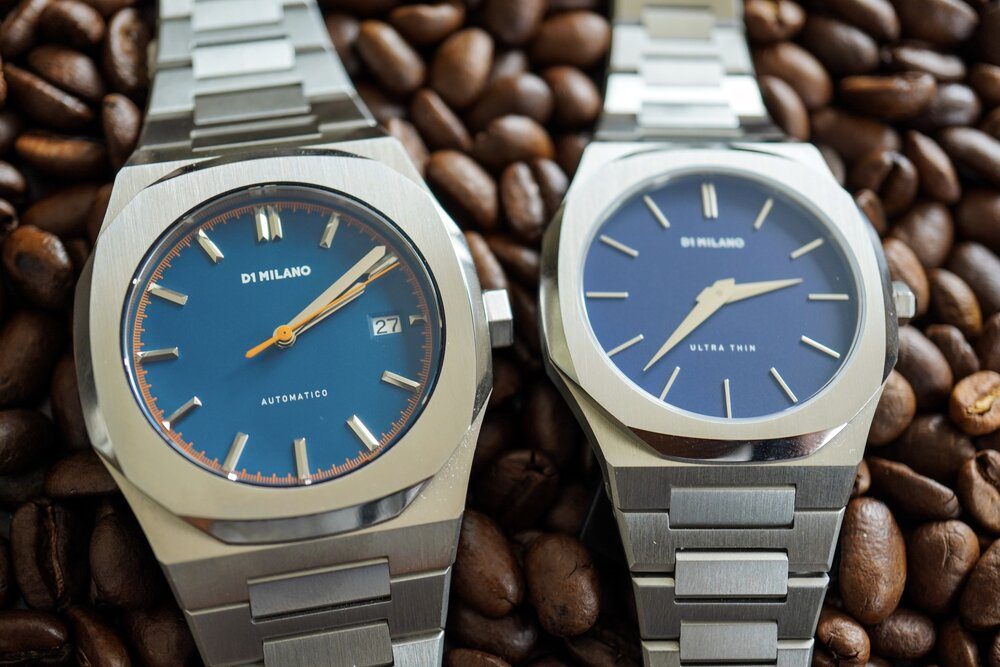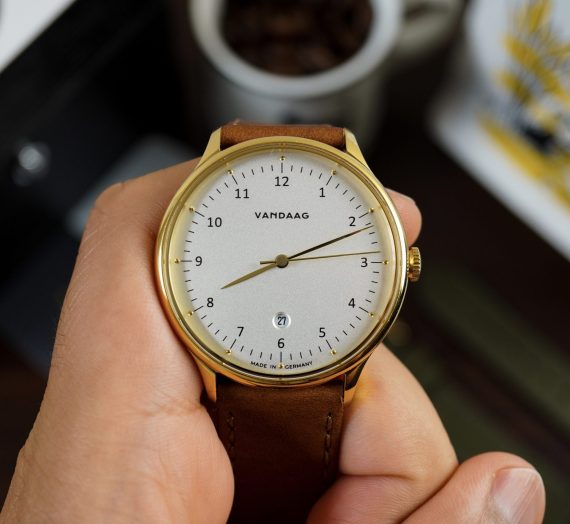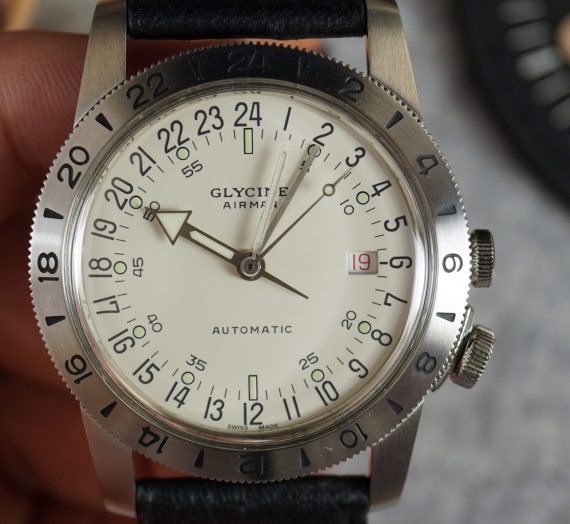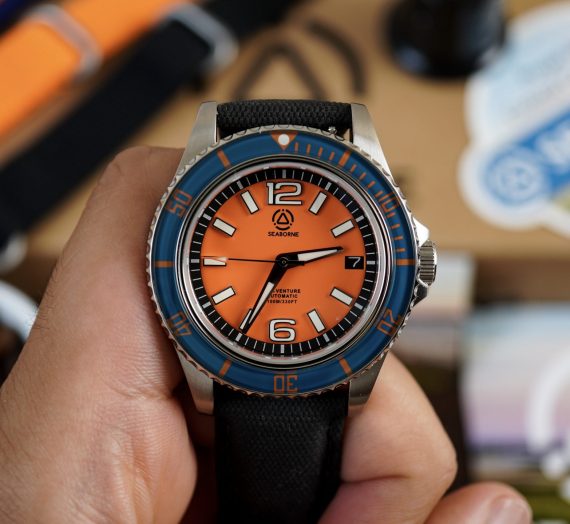Two very good looking watches for those willing to trade expensive movements for great finishing and a wide selection of design options.
Disclaimer: I received both the Atlas and the Ocean from D1 Milano to review. I am not required to return these watches to them. That said, these opinions are my own and D1 Milano had no input or influence over the outcome of this article. I was not paid to write this article.
I first heard of D1 Milano while browsing Instagram for interesting watches. I saw one of their watches and it immediately caught my eye. I’m a big fan of 70s watch design and Gerald Genta’s ever-lasting impression on the watch world. I looked into the brand and was impressed by the huge arsenal of watches they had produced, all cohesive in design and very visually appealing. I wasn’t a fan of the name, but was curious about the watches. I couldn’t figure out exactly where in the watch world this particular brand was positioned, but over time I discovered that their biggest consumer was the “fashionable & trendy” watch enthusiast.
Fast forward to a few months later to when D1 Milano approached me and asked if they could send me some watches to check out. If I liked them I could review and share it on my social media – a pretty good offer! As someone not familiar with the “fashionable & trendy” world of watches, I was a bit skeptical at first but decided to go ahead anyway. The only way to change my limited knowledge of a watch brand is to actually get one and spend some time with it. I received two watches from them, the Automatic Atlas and the Ultra Thin Ocean. It should come as no surprise that I picked these particular models since they’re both… well, blue.
I’ve had both these watches for about 6 weeks now, and here is a quick review of both of them:
Ultra Thin Ocean
Case Dimensions: 38mm (W) x 6mm (H)
Glass: Sapphire Crystal
Movement: Miyota Quartz
Discounts: Not typically, but occasionally 10-15%
Price: $365



Automatic Atlas
Case Dimensions: 41.5mm (W) x 11mm (H)
Glass: Sapphire Crystal
Movement: Seiko NH35
Discounts: Not typically, but occasionally 10-15%
Price: $625






Final Thoughts
From a value based perspective, both the Atlas (Automatic) and the Ocean (Ultra Thin Quartz) deliver identical levels of quality and attention to detail. The Automatic Atlas retails at $625 and the Ultra Thin Ocean at $365. At these price-points, it is difficult for serious watch enthusiasts to justify these watches given the vast new market of micro-brand watches in similar price ranges. For example, the Traska Freediver that I just reviewed is $35 more than the Ultra Thin Ocean, but has a decently regulated Seiko NH35 and has a hardened stainless steel surface coating.
These watches are for those that value appearance, and want a well manufactured watch that is made in the same design language of very popular watches today. If you want a watch that looks expensive, is designed and built well, the D1 Milano lineup is worth investigating. If you’re lucky you can find special deals on these watches that should get you around 10% off the retail.


I’ve noticed a few people call D1 Milano “knock-offs” for their design similarities to the big players – Royal Oak, Nautilus etc. The design influence is undeniable, but these watches are in no way different to other “accepted” watch designs from micro-brands such as Melbourne Watch Co. and Spectre Watches. D1 Milano has instead created an entire cohesive line-up of fantastic looking watches, and are even dipping their toes in more modern and creative design variations such as full Polycarbon cases. They also had a beautiful Meteorite dial a while ago. I think the whole argument is a slippery slope, but let me not dive into it deeper by just chanting the mantra, “If it makes you happy and it doesn’t hurt anyone, wear it proudly”.
That said, I obviously do not deny the common design language, but selectively accepting one brand over another seems silly to me. I love Gerald Genta’s designs from the 70s and I own and proudly wear a vintage Tissot Seastar that is extremely similar to the AP style design language, but wasn’t designed by the man himself. Yet this watch is considered “acceptable”?
To quickly summarize, and since everyone loves bullet points so much:
- I don’t dig the name of the brand on the dial, I would’ve preferred just “D1” or “Milano”. I’m not a fan of multi-word brand names on watches (Christopher Ward, but D1 Milano’s logo placement and logo design are exponentially better in my opinion).
- Excellent attention to detail on the dial and very clean manufacturing and finishing. Even on the cheaper ($365 vs $625) Ultra Thin, the dial is almost impeccable and is much better than some watches I’ve owned that cost twice as much (looking at you, Hamilton and Seiko) .
- The bracelet design is nice and but I personally think the links could have been a little more rounded/smooth. The clasp mechanism on both butterfly bracelets are a bit coarse, but I’m biased against this style of bracelet clasps to begin with.
- The Atlas has a significant wrist presence – you’re bound to catch some looks with it’s imposing but not obnoxiously large dimensions. The weight distribution is just perfect and the case dimensions are great. The dial on the Atlas is sporty but serious enough to wear to an important meeting. The Ultra Thin is subtle and elegant and is likely to go under the radar.
- The movement on the Atlas feels a bit unrefined with respect to the rest of the watch. The rest of the watch feels significantly more expensive, but the movement makes it feel like it should cost $350. I think the NH35 is a decent movement, but is hard to justify on watches over $500. It should be noted that their target audience are more of the trendy-watch collectors/enthusiasts, and not really the deeply invested watch collector. But maybe a slightly higher grade Miyota or ETA movement? I think a lot more serious watch enthusiasts would be willing to part with $600 for this if it had a better movement.
If you’re looking for a watch that is satisfied by everything I said above, go check out their huge lineup of watches. There’s something there for everybody – excellent dial color and strap choices. I’m enjoying seeing D1 Milano take more creative liberties with their watches (meteorite dial, polycarbon cases, etc), and I’m excited to see what they come up with next! I hope they decide to continue to venture outside their comfort zone and experiment more with case designs and dial layouts.














